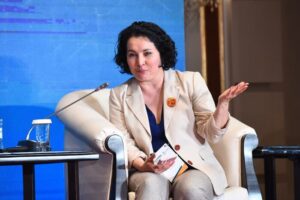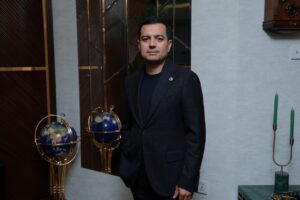Trump’s Ukraine strategy: More pressure on Kazakhstan if Russia rejects peace deal
There’s been a noticeable uptick in how the European Union is engaging with Central Asia. Notably, the Trans-Caspian International Transport Route (TITR) was a key topic at the recent Central Asia-EU summit in Samarkand. Kazakh political analyst and columnist Dossym Satpayev has addressed significant developments in EU relations with the region. Kursiv.media presents a summary of Satpayev’s main points, shared during a Parasat Business Club meeting on April 4, 2025, in Almaty.
Top EU priorities in Central Asia include:
- Mining of rare earth elements.
- Securing alternative sources of raw materials, particularly from Kazakhstan.
- Combating sanctions evasion.
- Addressing climate change.
- Strengthening regional security, especially regarding Afghanistan.
The EU is especially interested in Central Asian nations serving as humanitarian intermediaries for Afghanistan, helping prevent new waves of migration toward Europe.
This marks the beginning of a long-term pivot — if not by the EU as a whole, then certainly by individual member states — toward the East following the start of the war in Ukraine. The United Nations is in crisis, war has returned to Europe, the norms of international law are rapidly deteriorating and power politics are back in force. Meanwhile, global trade is under strain, and challenges like climate change and the rapid evolution of artificial intelligence (AI) are adding to global instability.
European countries are preparing for the possibility of increased U.S. isolationism and are seeking to strengthen their security frameworks.
One consequence is a shift in EU foreign policy priorities. Among EU member states, Germany, France, Hungary (an observer in the Organization of Turkic States) and key importers of Kazakh oil, especially Italy (Italian President Sergio Mattarella visited Kazakhstan in March 2025), are most actively engaged in Central Asia.
These developments suggest the emergence of a new world order as the old one collapses. What will this new era look like, and what role will Kazakhstan play?
Kazakhstan will inevitably feel the impact of these global shifts.
The country is more integrated into global systems than its Central Asian neighbors, a factor that contributed to the Trump administration’s decision to impose a 27% import tariff on some Kazakhstani goods. Currently, Kazakhstan continues to confirm its strategic significance. For example, at the recent Munich Security Conference, it was framed as part of the global economic landscape.
If U.S. policy toward Russia hardens under Trump’s presidency, Central Asia, and Kazakhstan in particular, could face serious new challenges.
The situation could become far more complicated if Russia rejects the terms of Trump’s proposed peace plan for Ukraine.
In that scenario, Trump is expected to ramp up pressure on Central Asia and adopt a hardline stance: either regional players comply with his terms or face sweeping restrictions, particularly targeting gray imports. A major project at risk is the TITR, a corridor that brings substantial revenue to its participants. Trump would likely demand that Central Asian countries fully support U.S. sanctions against Russia. This would force nations in the region, including Kazakhstan, to clearly define their geopolitical allegiances.
While the previous U.S. administration and the EU approached Central Asia cautiously, wary of pushing it closer to Russia and China, Trump is unlikely to be so measured. There’s a growing risk that any assistance to Russia through informal trade, currently a defining feature of the region’s economic reality, would be met with aggressive suppression. Should sanctions pressure intensify, Kazakhstan would find itself in an increasingly shaky position.
The TITR is of particular concern. Running from China to Europe via Kazakhstan, the route handles around 80% of all China-Europe overland transit. For Kazakhstan, it’s a vital and profitable project. Any U.S. restrictions on this corridor would represent a significant economic blow.
As global polarization intensifies, the International Monetary Fund has observed that the world is fracturing into three camps: countries aligned with the U.S., countries aligned with China and those still on the sidelines.
Trump’s goal would be to push these undecided states, including many in Central Asia, into the U.S. sphere of influence.
That means growing pressure on Kazakhstan and its neighbors to distance themselves from both Russia and China.
Meanwhile, European leaders have signaled that a rare window of opportunity has opened for Central Asian countries. In a time of global crisis and chaos, new centers of influence are emerging on the periphery. Several neighboring states have already adopted Kazakhstan’s model of multi-vector diplomacy. Uzbekistan, for example, is accelerating investment flows and showing strong momentum.
For Kazakhstan, retaining regional leadership is critical. While the country has yet to kick into high gear – a commodity-dependent mindset perhaps still hampers this process – decisive action is needed right now. The next 5 to 10 years could dramatically reshape the regional balance.




